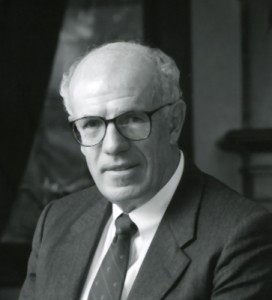Related Research Articles
A medical error is a preventable adverse effect of care ("iatrogenesis"), whether or not it is evident or harmful to the patient. This might include an inaccurate or incomplete diagnosis or treatment of a disease, injury, syndrome, behavior, infection, or other ailment.

An electronic health record (EHR) is the systematized collection of patient and population electronically stored health information in a digital format. These records can be shared across different health care settings. Records are shared through network-connected, enterprise-wide information systems or other information networks and exchanges. EHRs may include a range of data, including demographics, medical history, medication and allergies, immunization status, laboratory test results, radiology images, vital signs, personal statistics like age and weight, and billing information.
Computerized physician order entry (CPOE), sometimes referred to as computerized provider order entry or computerized provider order management (CPOM), is a process of electronic entry of medical practitioner instructions for the treatment of patients under his or her care.

A primary care physician (PCP) is a physician who provides both the first contact for a person with an undiagnosed health concern as well as continuing care of varied medical conditions, not limited by cause, organ system, or diagnosis. The term is primarily used in the United States. In the past, the equivalent term was 'general practitioner' in the US; however in the United Kingdom and other countries the term general practitioner is still used. With the advent of nurses as PCPs, the term PCP has also been expanded to denote primary care providers.
Health information exchange (HIE) is the mobilization of health care information electronically across organizations within a region, community or hospital system. Participants in data exchange are called in the aggregate Health Information Networks (HIN). In practice, the term HIE may also refer to the health information organization (HIO) that facilitates the exchange.
Patient safety is a discipline that emphasizes safety in health care through the prevention, reduction, reporting and analysis of error and other types of unnecessary harm that often lead to adverse patient events. The frequency and magnitude of avoidable adverse events, often known as patient safety incidents, experienced by patients was not well known until the 1990s, when multiple countries reported significant numbers of patients harmed and killed by medical errors. Recognizing that healthcare errors impact 1 in every 10 patients around the world, the World Health Organization (WHO) calls patient safety an endemic concern. Indeed, patient safety has emerged as a distinct healthcare discipline supported by an immature yet developing scientific framework. There is a significant transdisciplinary body of theoretical and research literature that informs the science of patient safety with mobile health apps being a growing area of research.
A Patient Safety Organization (PSO) is a group, institution, or association that improves medical care by reducing medical errors. Common functions of patient safety organizations are data collection, analysis, reporting, education, funding, and advocacy. A PSO differs from a Federally designed Patient Safety Organization (PSO), which provides health care providers in the U.S. privilege and confidentiality protections for efforts to improve patient safety and the quality of patient care delivery
Purkinje Incorporated pioneered pen computing for comprehensive clinical management of patients by physicians in 1991 with the "PureMD" ontology-anchored medical record was later rename Dossier that allowed physician order entry, knowledge-based clinical decision support, and billing from clinical note-taking recorded on a tablet computer. In1994 and 2007, "Dossier" was respectively awarded the "OCTAS of excellence" and the "TEPR award for standalone eprescribing systems". Dossier's impact of on clinical redaction was evaluated in two peer-reviewed studies. "Purkinje software and services" currently serve over 13,000 physicians in clinics, community health centers, and hospitals throughout North America. The company provides health software and related services in the areas of practice management, electronic health records, personal health records, and electronic prescribing. In addition, Purkinje provides a series of professional services to physician practices including billing services, transcription, and medication dispensing.

Homer Richards Warner was an American cardiologist who was an early proponent of medical informatics who pioneered many aspects of computer applications to medicine. Author of the book, Computer-Assisted Medical Decision-Making, published in 1979, he served as CIO for the University of Utah Health Sciences Center, as president of the American College of Medical Informatics, and was actively involved with the National Institutes of Health. He was first chair of the Department of Medical Informatics at the University of Utah School of Medicine, the first American medical program to formally offer a degree in medical informatics.
Health information technology (HIT) is health technology, particularly information technology, applied to health and health care. It supports health information management across computerized systems and the secure exchange of health information between consumers, providers, payers, and quality monitors. Based on a 2008 report on a small series of studies conducted at four sites that provide ambulatory care – three U.S. medical centers and one in the Netherlands, the use of electronic health records (EHRs) was viewed as the most promising tool for improving the overall quality, safety and efficiency of the health delivery system.

Bar code medication administration (BCMA) is a bar code system designed by Glenna Sue Kinnick to prevent medication errors in healthcare settings and to improve the quality and safety of medication administration. The overall goals of BCMA are to improve accuracy, prevent errors, and generate online records of medication administration.
Barcode technology in healthcare is the use of optical machine-readable representation of data in a hospital or healthcare setting.
Clinical point of care (POC) is the point in time when clinicians deliver healthcare products and services to patients at the time of care.

Telepharmacy is the delivery of pharmaceutical care via telecommunications to patients in locations where they may not have direct contact with a pharmacist. It is an instance of the wider phenomenon of telemedicine, as implemented in the field of pharmacy. Telepharmacy services include drug therapy monitoring, patient counseling, prior authorization and refill authorization for prescription drugs, and monitoring of formulary compliance with the aid of teleconferencing or videoconferencing. Remote dispensing of medications by automated packaging and labeling systems can also be thought of as an instance of telepharmacy. Telepharmacy services can be delivered at retail pharmacy sites or through hospitals, nursing homes, or other medical care facilities.

David Bates is an American-born physician, biomedical informatician, and professor, who is internationally renowned for his work regarding the use of health information technology (HIT) to improve the safety and quality of healthcare, in particular by using clinical decision support. Bates has done work in the area of medication safety. He began by describing the epidemiology of harm caused by medications, first in hospitalized patients and then in other settings such as the home and nursing homes. Subsequently, he demonstrated that by implementing computerized physician order entry (CPOE), medication safety could be dramatically improved in hospitals. This work led the Leapfrog Group to call CPOE one of the four changes that would most improve the safety of U.S. healthcare. It also helped hospitals to justify investing in electronic health records and in particular, CPOE. Throughout his career, Bates has published over 600 peer reviewed articles and is the most cited researcher in the fields of both patient safety and biomedical informatics, with an h-index of 115. In a 2013 analysis published by the European Journal of Clinical Investigation, he ranked among the top 400 living biomedical researchers of any type. He is currently editor of the Journal of Patient Safety.

Janet Woodcock is an American physician serving as Principal Deputy Commissioner of Food and Drugs, having previously served as Acting Commissioner of the U.S. Food and Drug Administration (FDA). She joined the FDA in 1986, and has held a number of senior leadership positions there, including terms as the Director of Center for Drug Evaluation and Research (CDER) from 1994 to 2004 and 2007 to 2021.
Dean-David Schillinger is an American general internist and former Chief of the University of California San Francisco (UCSF) Division of General Internal Medicine at San Francisco General Hospital (SFGH). In 2006, he founded the UCSF Center for Vulnerable Populations, whose mission is to advance health in poor communities. His research focuses on health communication for vulnerable populations, and the prevention and control of type 2 diabetes.

Dean Forrest Sittig is an American biomedical informatician specializing in clinical informatics. He is a professor in Biomedical Informatics at the University of Texas Health Science Center at Houston and Executive Director of the Clinical Informatics Research Collaborative (CIRCLE). Sittig was elected as a fellow of the American College of Medical Informatics in 1992, the Healthcare Information and Management Systems Society in 2011, and was a founding member of the International Academy of Health Sciences Informatics in 2017. Since 2004, he has worked with Joan S. Ash, a professor at Oregon Health & Science University to interview several Pioneers in Medical Informatics, including G. Octo Barnett, MD, Morris F. Collen, MD, Donald E. Detmer, MD, Donald A. B. Lindberg, MD, Nina W. Matheson, ML, DSc, Clement J. McDonald, MD, and Homer R. Warner, MD, PhD.

Robert Brian Haynes OC is a Canadian physician, clinical epidemiologist, researcher and an academic. He is professor emeritus at McMaster University and one of the founders of evidence-based medicine.
Emily S. Patterson is an American ergonomist and academic. She is a professor in the Ohio State University College of Medicine.
References
- ↑ "Ross Koppel". Library of Congress. Retrieved 26 June 2017.
- ↑ "Ross Koppel, PhD, FACMI".
- ↑ "Ross Koppel, Ph.D. - Sociology at the University of Pennsylvania". sociology.sas.upenn.edu.
- ↑ R Koppel, J Metlay, A Cohen, et al., “Role of Computerized Physician Order Entry Systems in Facilitating Medication Errors,” J Am Medical Association, 2005;293(10):1197-1203.
- ↑ R Koppel, T Wetterneck, J Telles, B Karsh, “Workarounds to Barcode Medication Administration Systems: Their Occurrences, Causes, and Threats to Patient Safety,” J Am Med Inform Assoc (2008) 15 (4): 408-423.
- ↑ M Harrison, R Koppel, S Bar-Lev, “Unintended consequences of information technologies in health care—an interactive sociotechnical analysis,” J Am Med Inform Assoc (2013) 20 (e1): e2-e8.
- ↑ Joseph Conn, “Raising Questions", Modern Health Care, 26 January 2013.
- ↑ Steve Lohr, “Panel Emphasizes Safety in Digitization of Health Records”, New York Times, 8 November 2011.
- ↑ “Barcode Technology Flaws Put Some Patients at Riskm,” Washington Post, 3 July 2008.
- 1 2 “Ross Koppel Award Statement”